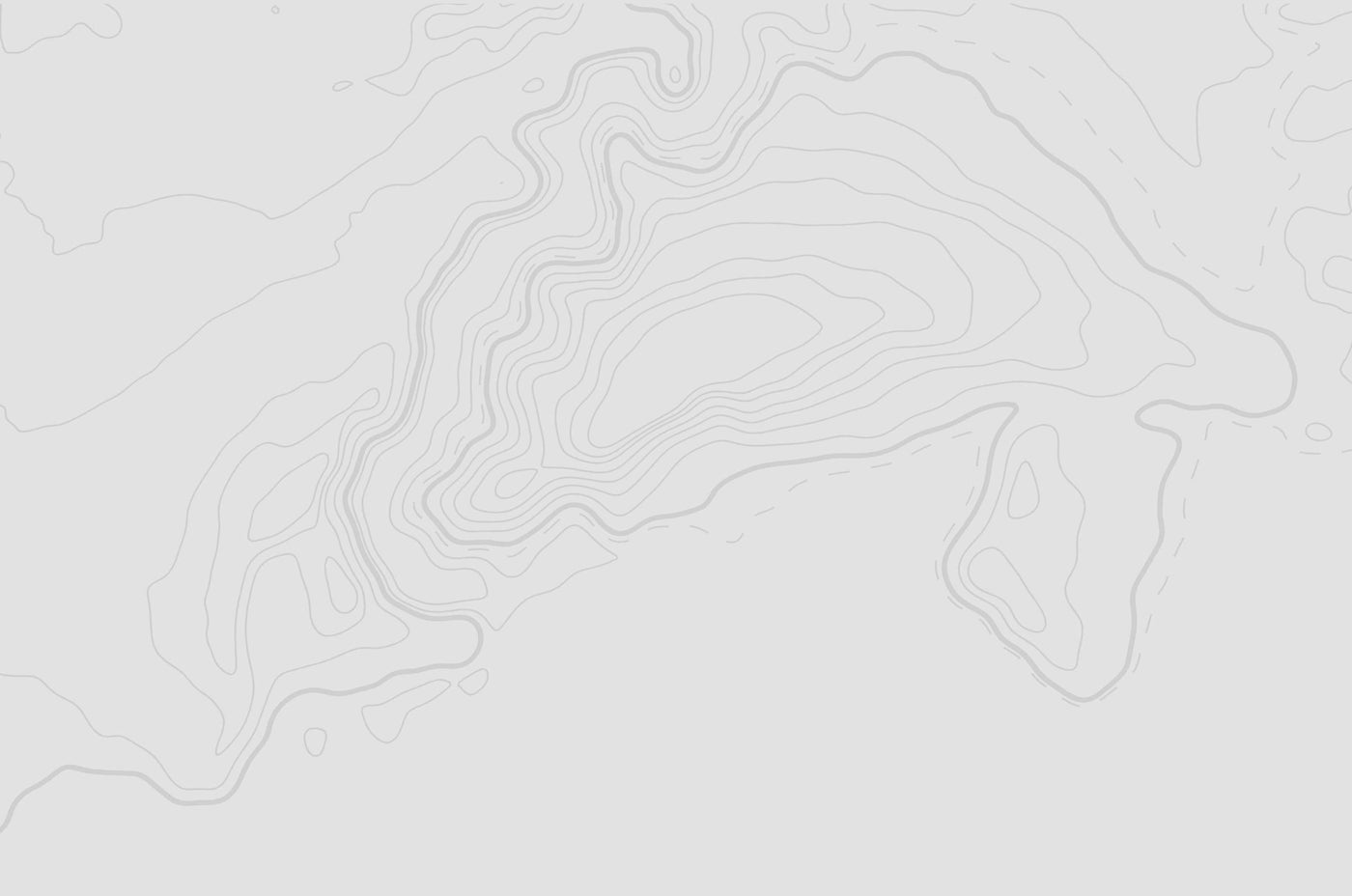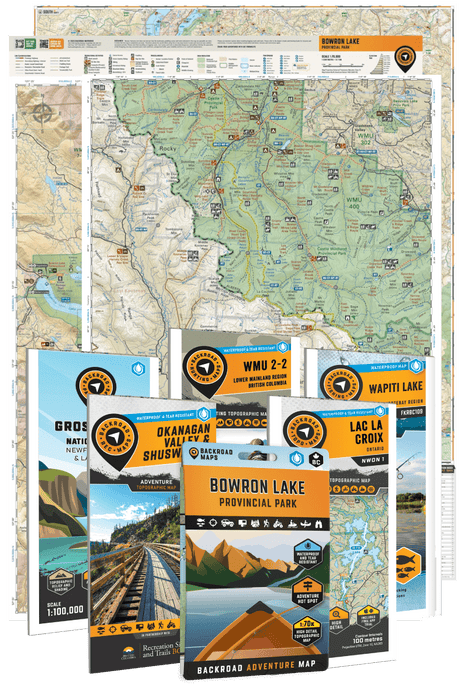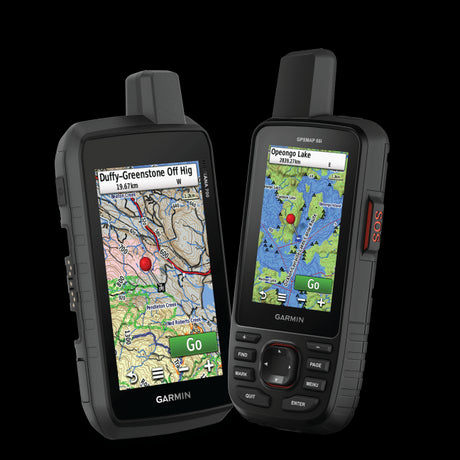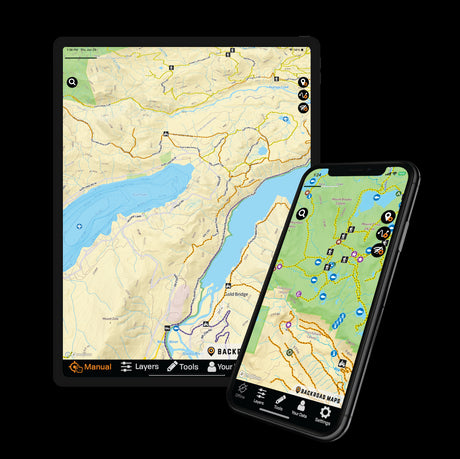At Backroad Mapbooks, our passion is exploring the great outdoors. Not only are we fortunate enough to live in a country with such a wealth of natural beauty as Canada, but we are able to enjoy this bounty freely regardless of our skin colour, language or religion. For this, we have our veterans to thank, who sacrificed everything to make Canada what it is today. With Remembrance Day coming up, many of us will take some time to honour our brave fighting men and women. With this in mind, we have put together a list of some of the best places to celebrate Canada's veterans this Remembrance Day weekend, including some lesser known destinations that you may not be aware of.





National War Memorial
As a British dominion, Canada was automatically brought into WWI when Britain declared war on Germany in 1914. Many Canadians, particularly those of British descent, were enthusiastic about joining the war. The harsh realities of modern warfare were not yet widely known – trench warfare, chemical attacks and the use of tanks and machine guns were fairly recent advents to the battlefield. The “war to end all wars,” as it would be called, led to a casualty rate of 39% among Canada's 620,000 soldiers – 67,000 killed and 250,000 wounded. In 1925, to commemorate the unprecedented sacrifices of those who served in The Great War, the Canadian government held a world-wide competition to choose a design for a national war monument. The aim of the design was to represent “the spirit of heroism, the spirit of self-sacrifice, the spirit of all that is noble and great that was exemplified in the lives of those sacrificed in the Great War.” The contest was won by English sculptor Vernon March, who created a design called “The Great Response.” The focal point of the design are 22 servicemen and women, representing all of the groups engaged in the First World War, including infantrymen, pilots, sailors, nurses, air mechanics, engineers and stretcher-bearers. The figures stand beneath a 21 metre (70 ft) tall granite arch, at the top of which are two 5 m (17 ft) figures of the Roman mythological characters Demeter and Nike, meant to represent peace and freedom, which cannot exist separately. The bronze figures were completed in 1932 by Vernon March's six brothers and sisters, following his unexpected passing in 1930. There was then a delay in preparing a site for the monument, and it was not completed until 1938. Around 100,000 people gathered to witness the unveiling ceremony in 1939, which included an address by King George VI. The monument has since been rededicated twice. In 1982, the dates 1939-1945 were added to commemorate the second world war, as well as 1950-1953 for the Korean War. In 2014, the monument was rededicated again to honor veterans of the South African (Boer) War (1899-1902) as well as the mission in Afghanistan (2001-2014). Also, in 2000, the Tomb of the Unknown Soldier was added to the front of the memorial. You can find the Canadian National War Memorial off of Wellington Street in Ottawa, Ontario, across from the Parliament Building.
Photo courtesy of forces.gc.ca
Camp X Memorial
Located in Whitby, Ontario, an unassuming municipal park was once home to one of the most elite military training camps in the British commonwealth. Known unofficially as Camp X, attendees were taught techniques of sabotage, subversion, intelligence gathering and more in preparation for being dropped behind enemy lines. The camp also served as a crucial communications link between Britain and the United States, and members of the FBI and the Office of Strategic Services (precursor to the CIA) secretly attended the camp. Camp X was run by a man named Sir William Stephenson, a distinguished WWI pilot turned spymaster. Ian Fleming, who claimed to have attended Camp X, has stated that the real-life inspiration for his James Bond character was Sir William Stephenson. Additionally, Camp X was home to a highly sophisticated telecommunications operation called Hydra, which was used to code and decode information away from the reaches of Nazi intelligence. The camp's location on Lake Ontario made it the perfect location to pick up radio signals from the UK. Following the war, Camp X was used to hide and interrogate the famous Soviet defector Igor Gouzenko. It was then turned into a wireless intercept station before being closed down and destroyed in 1969. All buildings were either moved from the site or bulldozed into Lake Ontario. Today, a simple concrete monument with a few flags stand in what is now known as Intrepid Park. If you take some time to explore the park, however, you may find old foundations, and rumour has it that a sealed bunker still remains hidden in the area. Occasionally, artifacts from the camp are found by visitors – pieces of barbed wire, shell casings, ceramics and other artifacts have popped up on occasion.
Photo courtesy of Wikimedia
Mackenzie-Papineau Battalion Memorials
Did you know that around 1,500 Canadians volunteered to fight in the International Brigades during the Spanish Civil War of 1936-1939? The Canadians even formed their own unit, named the Mackenzie-Papineau Battalion in honour of the Rebellions of 1837, and were known as the “Mac-Paps.” Although volunteers from all over the world made up the International Brigades, no other country contributed more soldiers than Canada, with the exception of France. The Spanish Civil War began with a rebellion against the Republican Government by a group of army officers with support of various right-wing, nationalist and fascist groups. Led by General Francisco Franco, who would go on to become the fascist dictator of Spain, the rebels were supported by the governments of Adolf Hitler in Germany and Benito Mussolini in Italy. The spread of fascism in Europe greatly alarmed many Canadians, many of whom were born in Europe and feared for the future of their home countries. Most of the volunteers were manual labourers with little to no military training. Their journey took them by train either to New York or Montreal, where they would cross the Atlantic by boat into France, then into Spain by foot across the Pyrenees Mountains. The Republican cause had little international support, and volunteers were faced with a lack of proper equipment and ammunition. Of the 1,500 Canadians who went to Spain, 238 were killed and 118 went missing in action. One of the most notable Canadian volunteers was Dr. Norman Bethune, who developed the use of mobile medical units during the war. Another notable volunteer, hailing from the UK, was author George Orwell, who went on to write his novel Homage to Catalonia about his experiences in Spain. Canadian volunteers of the Spanish Civil War were unrecognized by the Canadian government for their service, and many experienced persecution during the anti-Communist fervor of the cold war. In 2000, a monument to the Mac-Pap veterans was unveiled in Victoria, just outside of the provincial legislature. In Toronto, a memorial plaque can be found in a garden on the west side of the legislature buildings. In 2001, The Mac-Paps finally received a national monument in Ottawa. The monument consists of a five-metre tall steel silhouette of Prometheus as well as a memorial wall containing 52 steel plaques inscribed with the names of all 1,546 volunteers. You can find this monument in Green Island Park off of Sussex Drive.
Photo courtesy of Bernard von Schulmann
National Aboriginal Veterans Monument
Canada's First Nations have a long and proud history of serving in the military, dating back to the days before confederation. During the War of 1812, members of more than 15 First Nations fought on the side of the British against the Americans, proving instrumental in shaping Canada as we know it today. After the outbreak of WWI, one in every three able-bodied First Nations men in Canada volunteered to fight overseas. Aboriginal volunteers often had to overcome significant cultural, linguistic and geographic barriers in order to enlist. In British Columbia's Lake Band, every single man between the ages of 20 and 35 signed up. In the Maritimes, the Mi'kmaq and Maliseet First Nations saw half of their eligible men enlist for the war effort. From all across the country, aboriginal women volunteered as nurses, while those who stayed at home raised tens of thousands of dollars for the war effort. During the Second World War, thousands of Canadian First Nations men and women once again volunteered to serve, and aboriginal warriors were part of every major Canadian battle, including the Dieppe landings and the Normandy invasion. Aboriginal volunteers also played a crucial role in transmitting intelligence, using their native languages to send encrypted transmissions – the Germans had no way to translate First Nations dialects. With the inclusion of the Korean War, it is estimated that 12,000 aboriginal Canadians served in the major conflicts of the 20th century. This includes an unknown number of Inuit, Métis and non-status Indian veterans. To commemorate the service of First Nations veterans, a National Aboriginal Veterans Monument was unveiled in Ottawa's Confederation Park in 2001. The beautiful bronze monument, designed by celebrated sculptor Lloyd Pinay, depicts a golden eagle atop four human figures, representing First Nations, Inuit and Métis people, who hold weapons as well as spiritual objects including an eagle feather fan and peace pipe. Below the human forms are four animals who act as spirit guides – a wolf, buffalo, elk and a bear.
Photo courtesy of Nation Talk
Japanese Canadian War Memorial
In the early 1900s, thousands of people emigrated from Japan to Canada, mostly young men from fishing villages on the southern islands of Kyushu and Honshu, with most of them settling along the BC coast. These immigrants were known as Issei, or “first generation.” After the outbreak of the First World War, many Issei wanted to prove their allegiance to their new homeland and join the fighting. Many saw military service as a pathway to full Canadian citizenship. Around 220 Japanese-Canadians signed up for training in Vancouver, only to be denied entry into the military by the BC government, forcing them to travel to Alberta to enlist. Japanese-Canadian volunteers would participate in all of Canada's major battles during The Great War, including the Battle of the Somme, Vimy Ridge, Passchendaele and many others. 54 Japanese-Canadians were killed and buried in France, 92 were wounded and 11 were decorated for outstanding bravery. After the surviving soldiers returned, the Canadian Japanese Association raised money to build a cenotaph in their honour in Vancouver's Stanley Park, which still stands today. An “eternal flame” was lit at the monument on the third anniversary of the Battle of Vimy Ridge, then extinguished in 1941 following the attacks on Pearl Harbour. Many Japanese-Canadian veterans of the First World War were subject to internment during WWII, despite their military service. The flame was finally lit again in 1985, and still burns in memory of those who served on the harrowing battlefields of WWI.
Photo courtesy of Wikipedia







